Baby Foods Your Dog Should Never Eat with @dogmeets_baby Dominika Knossalla-Pado
In this episode we're talking about:
- Which 4 categories of foods that babies eat but dogs should not and why
- How to incorporate your dog at mealtimes whether they're well-trained, not well-trained or crate-trained
- What to do with your dog before, during and after mealtimes when they want to jump in and be with baby
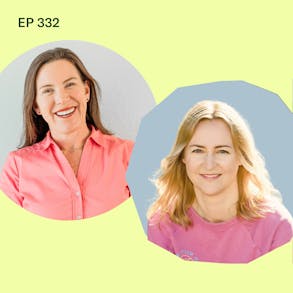
LISTEN TO THIS EPISODE
Episode Description
Dog people: do you let your dog clean up after your baby eats solid food? Dominika from @dogmeets_baby helps family dogs get integrated into growing families. She’s sharing four different categories of foods babies eat that dogs should not.
About the Guest
- Dominika is a certified dog trainer and mom of twins

- Her company Dog Meets Baby offers services and classes for introducing babies to dogs of growing families




- She did baby-led weaning with her twins and now helps families combine dogs and babies safely
Links from this Episode
- Dominika’s Dog Meets Baby website: https://www.dogmeetsbaby.expert/
- Follow Dominika on Instagram @dogmeets_baby
- ASPCA People Foods Your Dog Should not Eat https://www.aspca.org/pet-care/animal-poison-control/people-foods-avoid-feeding-your-pets
- Baby-Led Weaning with Katie Ferraro program with the 100 First Foods™ Daily Meal Plan, join here: https://babyledweaning.co/program
- Baby-Led Weaning for Beginners free online workshop with 100 First Foods™ list to all attendees, register here: https://babyledweaning.co/baby-led-weaning-for-beginners
Other episodes related to this topic:
- Dog Meets Baby: BLW Do's + Don'ts For The Whole (Furry) Family with Alexandra Parry, DVM https://blwpodcast.com/episodes/56

Latest Episodes
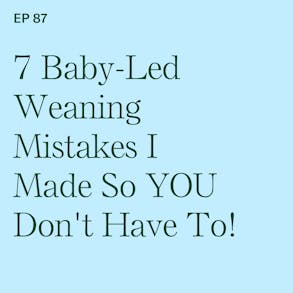
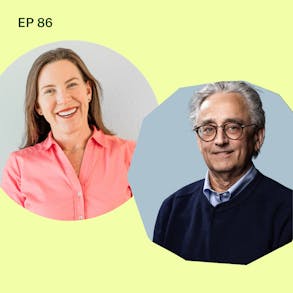
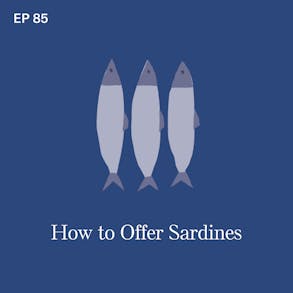
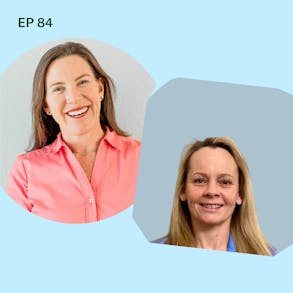
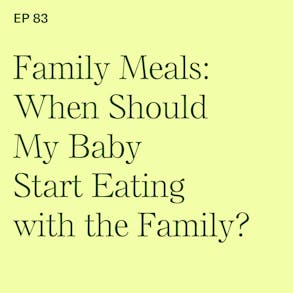

Dominika Knossalla-Pado (1m 56s):
And If, you talk to the veterinarians. I talk to many and they tell me that they don't even have raisins and grapes in the house like it's an outside the house snack because it is so dangerous and you often are because they're so small, right? Like you drop the child drops one or two raisins. That can be extremely toxic. And, it can cost a dog life.
Katie Ferraro (2m 16s):
Hey there. I'm Katie Ferraro, registered dietitian, college nutrition professor and mom of seven specializing in baby led weaning here on the baby-led weaning made easy podcast I help you strip out all of the noise and nonsense about feeding, leaving you with the confidence and knowledge you need to give your baby a safe start to solid foods using baby led weaning. Dear Dog people, do you let your dogs in and around where your baby is eating when they start solid Foods? And do you love the idea of having your dog clean up after your baby has made their requisite baby-led weaning mess?
Katie Ferraro (2m 58s):
If, you are a dog person. You might be familiar with Dominika from Dog meets Baby. She's our guest today. She's gonna be talking about baby Foods that your dog should never eat. I'm fascinated by Dominika's world. People who know me know that I'm not an animal person. I don't actively dislike animals, I just don't like them. But I, you guys love animals. And, I get so many tags, pictures, dms, about your dogs, really loving baby-led weaning. And for the most part, Dominika is gonna share that what you're doing is totally safe. But also sharing some ideas about four different categories of foods that are definite no-nos for dogs and why. So with no further ado, I wanna introduce you guys to Dominika from Dog Meets Baby, talking about baby foods that your dog should never eat.
Dominika Knossalla-Pado (3m 47s):
Thank you so much for having me.
Katie Ferraro (3m 50s):
I know you do podcast interviews all the time. You have like such a unique niche of like baby plus dog stuff. And I was like, we have covered babies and dogs in the past. We had a veterinarian mom who was also in our hundred first foods program. Come on. But it's been a long time. So I wanna get a refresher on everything we need to know. But before we start, could you tell us about your background? How did you come to specialize in this very unique area that you found yourself on in the internet?
Dominika Knossalla-Pado (4m 15s):
I've been a dog trainer for a long time, since 2008. And I have always worked with families and then I had my kids and my dog had a very scary reaction that's very rare to my children, very predatory. And once everything ended up well, it got me thinking, what if other people are in the same situation? And I started working more with families and then the pandemic hit and I started Dog Meets Baby.
Katie Ferraro (4m 43s):
So what do you do at Dog Meets Baby? What sort of services do you provide?
Dominika Knossalla-Pado (4m 46s):
I focus on preparing and training or helping the parents prepare and train dogs for the life after baby, once the baby joins. And also how to introduce a child to the baby, a baby to the dog the right way. So it's safe. So they know the steps and in case there is a similar situation to mine, they know what to do or they can recognize the dangers. And then once the baby becomes mobile, that's when actually many problems start. And I would say, most people reach out to me before they have the baby and once the baby's mobile.
Katie Ferraro (5m 25s):
So do you offer courses then? I was looking like pre-baby is like, how to get your dog kinder ready, but then once the baby's here does stuff totally change. I am not a dog person by any stretch of the imagination. So I'm, I'm very for, it's very foreign to me.
Dominika Knossalla-Pado (5m 38s):
Yeah, it's so, it's pre-baby. We are preparing the dog for, for life with the baby. But of course you cannot train before you have the baby with the actual baby. So many things change when the baby starts moving. And too many dogs, this is the scary moment. And of course the child not being mobile and, and being a young toddler or older infant does not follow any directions at this age. And they are very grabby and they're very curious as they should be. And dogs don't really find it amusing. And that's when there are problems.
Katie Ferraro (6m 12s):
So I'm a dietitian, I teach about baby-led weaning. A lot of the families in our community have dogs and they say they love this idea, oh, the dog can just come over and clean up after the baby. But I'm also aware even as a non dog person, that there's lots of human foods that dogs should not eat. So could you share some best practices for families who have babies and they're starting solid foods, there's food dropping on the floor cuz the baby doesn't know what to do with it yet. Should the dog be allowed to come in, clean it up or not?
Dominika Knossalla-Pado (6m 37s):
That's a great question. So many people are very excited about this. And I would say the dogs are very excited about this new phase. And from a trainer's point of view, that's a great bonding experience. Food of course is a no brainer. It's a, it's a very positive association with the baby, but it's also a very unique situation because the baby is stuck in the high chair and drops that food, or the dog comes over and licks the food off their hands and the dog learns that It's a very predictable situation. It's a very productive area and it's safe. And many people assume that the, the moment the baby, they will start solids, that's when the dog is going to start loving the baby.
Dominika Knossalla-Pado (7m 23s):
Not quite, because a baby out of HK with no food is still scary to many dogs. I just wanted to throw it out there because it's a, it's a common myth and many people are very surprised that it's not the way it is. N how to do it. It does depend on several factors. So many followers, many clients, they start out the way I do, that you're very excited about it and it's such a fun thing. Your child is dropping that food, your dog is cleaning that food and the floor is clean, of course that, that's a big plus. But what starts happening is that the child starts feeding the dog more and more. They're eating less and less. The dog starts becoming more pushy and just starts grabbing the food to a point where some dogs, if they are able to reach, they will just eat it off the high chair or they will jump up and try to get it.
Dominika Knossalla-Pado (8m 14s):
Or If, you have multiple dogs, unfortunately the food is dropped on the floor, that can cause fights. The dogs will start fighting over it. Some dogs become so extreme that they decide that this is their area. And even when the baby is not there, if they see that someone is approaching this area, they are protective of it. So it become, it can be quite dangerous. It can be innocent annoying where the dog is just being more pushy. Or sometimes dogs bark, they just bark at the child, just drop more. The demand barking of course, drives everyone crazy. So what most people end up doing is that after the, let's see how fun it is, how great it is, people start having rolls.
Dominika Knossalla-Pado (8m 58s):
So the dog is, while the child is eating, the dog is behind a baby gate. The dog stays on the dog bed if they're trained to do so, the dog is outside, the dog is in the crate. Generally they're not allowed to clean up until the baby's done eating.
Katie Ferraro (9m 45s):
So Dominika, gimme some examples of specific Foods that babies might be eating, right? We're doing baby-led weaning, they're eating real whole pieces of soft food. It falls on the floor. What are the ones that like, definitely the dog shouldn't eat. That could be a danger to the dog.
Dominika Knossalla-Pado (10m 13s):
Yes. So I would divide into four categories. And the one that's really, really scary is the foods that are non-dose dependent. So the dog can eat a very tiny amount. And, it can be lethal. And those are raisins and grapes and xylitol so anything like, well typically it could be in chewing gum. I'm guessing the the kids are not going to have chewing gum at this age. but it can be in peanut butters in Jello,
Katie Ferraro (10m 43s):
Like the sugar alcohol xylitol, like it's in, in tons of sugar free foods. Is that what we're talking about? Yes, and honestly, we, we wouldn't offer those foods to babies, but with the grapes and the raisins for sure. And also we also point out that sometimes those foods are laying around on the floor. And in the case of a baby, you know, foods like raisins or hard candies, the other child would pick it up in the house, an older kid, and then give it to the baby just trying to share. And so I can see those foods being around. So raisins and grapes, even a small amount could be lethal to the dog.
Dominika Knossalla-Pado (11m 11s):
Yes. So there, there was actually a breakthrough, there was a research recently and now they finally discovered after 20 years of, of a mystery why they're so toxic that it's a tartaric acid that is in And. it can also be in a, in a homemade playdough. So it's, it's something that is used in, in other products and that's what's very toxic to dogs. And the reason why it's so scary and If, you talk to the veterinarians, I talk to many and they tell me that they don't even have raisins and grapes in the house like it's an outside the house snack because it is so dangerous and you often are because they're so small, right? Like If, you drop the child drops one or two raisins.
Dominika Knossalla-Pado (11m 52s):
That can be extremely toxic. And, it can cause the dog's life. So they don't even have it at home.
Katie Ferraro (11m 58s):
So the first one, non dose-dependent Foods like raisin and grapes, cause in small amounts they can be lethal. What's the next category?
Dominika Knossalla-Pado (12m 4s):
Yeah, so the other one is, this is the choking hazard and the one that comes up all the time, it's corn. It's the corn cob. And some dogs will grab it from the trash can. Some dogs, you know, the child will give it to the dog or the, the dog will seal it and that can cause obstruction. And, it happens so much. I was not aware until I, I launched Dog Meets Baby. I just saw those messages people are sharing with me. Please tell everyone, please tell everyone this is what happened to my dog. It was a very expensive surgery. My, my dog almost didn't make it. It's so common that the dog will eat it and then it gets stuck.
Dominika Knossalla-Pado (12m 44s):
And the other one is the muffin wrappers or the cupcake wrappers. The dog will eat it. And again, it gets stuck.
Katie Ferraro (12m 53s):
Okay, the next category of foods that you don't recommend. Number three.
Dominika Knossalla-Pado (12m 56s):
We have the, the toxic and it's choking hazard. So that is, I would say with kids it's probably less common, but if you give your child avocado and you know, my kids were born in California, that was their first food. Avocado. So if you give them avocado and you live, you, you have the avocado pit around and the dog grabs it. That can be both toxic and can cause an obstruction. So it's not so much the avocado, even if a lot of times you will find it online, but it sounds like the vets are not really too worried about it. It's the avocado pit. And then we have the, the pits or the seeds of apricot cherry plum.
Dominika Knossalla-Pado (13m 36s):
So when you give your child fruit, just remember that the seeds or the the pits have to be removed safely.
Katie Ferraro (13m 43s):
Okay, and then the fourth category.
Dominika Knossalla-Pado (13m 44s):
And then the fourth category. It's toxic but not dose dependent, which means that it's, if a dog eats a little bit, they might be okay, but if they eat a lot, that can cause problems. And that would be chocolate, which, you know, I don't know how many young kids eat chocolate. It's the dark chocolate. Those are the onions, the garlic, the walnuts, Mac nuts. Any salty snacks or starfruit?
Katie Ferraro (14m 13s):
Why starfruit?
Dominika Knossalla-Pado (14m 13s):
I don't know. It's on this list too. So it's like it's, there are many, many products that can if you eats too much, they can cause an upset tummy. And of course the size of the dog matters or any medical conditions, right? Like if it's a Puppy or an older dog, they might be affected much more than an 80 pound healthy boxer. It's always good to, there are free apps that you can go online. The ASPCA has one and you can look up what your dog ate and see how toxic it is. You can put in the amount and then they will tell you and then enter your dog's weight. And then you will know what you need to do. You can just like relax watch your dog or you should rush to your dog to the emergency veterinarian.
Dominika Knossalla-Pado (14m 54s):
And there is a poison line that you can call. You can always call your veterinarian. It's always good to double check with a specialist if your dog ate something and you are not sure.
Katie Ferraro (16m 21s):
So Dominika, one thing we teach about is the importance of creating a distraction-free feeding environment when your baby is learning how to eat, a lot of this is about needing the baby to focus, to pay attention, helps reduce the choking risk. I'm curious to know with your own twins, when they were starting solid foods, did you let animals around during mealtimes or did you keep them separate?
Dominika Knossalla-Pado (16m 40s):
When we started, I had one dog, And I was not doing the board and train, board and train is when you have other dogs at your house for training. So I mostly had one, just my one dog. And we lived in one bedroom, a small one bedroom at that time. So basically my setup was kid in the high chair, kid in the high chair and then the dog was on her dog bed. Very well trained. Now she's still well trained, but not like we let her clean a little bit more at this point. But she was just waiting there and if this was something that she could eat, I was letting her clean up. Now she became a little bit more pushy once we moved to a different house and then we started having other dogs around and then she lost the privileges.
Dominika Knossalla-Pado (17m 25s):
So she was removed. I was using a baby gate, a retractable baby gate. She had to wait. And then if this was something she could have, I was letting her clean up.
Katie Ferraro (17m 35s):
So you teach courses about helping families to integrate their dogs into their growing families. What are some tips for the pre starting solid foods phase? Like we haven't started yet babies four, five months of age. We talk to parents about pre feeding skills, like get your baby comfortable sitting in the, the highchair and there's different oral development tools that you can use or we do breast milk popsicles. Is there anything that you can do with your dog, kind of the equivalent of a pre feeding skill for your dog to get them used to this next phase that's coming with the baby?
Dominika Knossalla-Pado (18m 2s):
That's such a great idea. I never really approach that this way, but I always tell parents that when we train before we have the baby, one of the things I really want the parents to focus on is to be able to tell your dog where you want them to be. So go to bed, right? Like go to crate or go to couch and stay there until we call you off. And that is something that you practice before you have the baby. But I do recommend that we practice this before the baby starts getting mobile. And this is equally important for the solids for eating foods because you really want to be able to direct your dog and you want them to listen.
Dominika Knossalla-Pado (18m 45s):
And the other thing is because we prepare them for the mobile baby phase and many mobile babies are scary to dogs initially. So I want the dog to be comfortable behind a gate. So again, this will be useful for the solids because I do agree it's, it's very distracting to have dogs around, but there's, it can also be dangerous because the dog can really become protective of that space. And, I never want a situation when the dog is protective of the high chair and the baby crawls up there and that's when something happens. And I, I had clients that that's the reason why we work together and there was no even food like the, you know, they can become protective when there is no food involved.
Dominika Knossalla-Pado (19m 25s):
So you really want to be, you want to have rules.
Katie Ferraro (19m 29s):
When the baby is eating. Do you have any tips for families that are in like the same situation as you? Maybe there's a twin mom, she's got babies in the highchair, small space, the dogs around there. Like how can you manage both animals and babies in a busy household when you're at that six month mark and your baby is starting solid foods?
Dominika Knossalla-Pado (19m 45s):
Yes. So if your dog is trained and, and will stay on the dog bed, use the training. If your dog is not trained enough while you feed your kids, you can feed your dog. And of course If, you give the food in a, in a bowl, they are going to eat it. Most dogs really fast. And then what's next? So you can use puzzle toys. There are many puzzle toys per dogs. The the one that's very popular, most dog parents have it or know about it. It's a conkc If. you can put things in a conk, you can make a peanut, but a conk, it's like a staple in almost every house. So you can give it to your dog while you feed your kids. And that's way your, your dog is busy. If your dog is crate trained, you can put them in the crate.
Dominika Knossalla-Pado (20m 27s):
If you have a baby gate or you have some sort of exercise pen. You can either put your kids in it or you can put your dog in it. So depending on what's more useful, some people really like to put the dogs outside because if they're behind a baby gate, they tend to bark. But if they're outside, they are not really disturbing anyone. So that's another option.
Katie Ferraro (21m 32s):
Well, Dominika, this has been hugely helpful. I really appreciate your expertise. Tell us more about the courses that you offer and where audience can go to learn more if they wanna check out your work and work with you.
Dominika Knossalla-Pado (21m 42s):
So, if you are expecting a baby, the courses are on my website, dogmeetsbaby.expert. And there are two courses or you can get them. You can get them separately or as a bundle to prepare, train and introduce the dog to the baby. And I have a new course coming out and that is a toddler course and there will be a crash course, how to prepare the dog for the mobile baby phase. And we're also going to talk about the solid foods.
Katie Ferraro (22m 9s):
And that's all on dogmeetsbaby.expert What's your Instagram?
Dominika Knossalla-Pado (22m 13s):
It's dogmeetsbaby.
Katie Ferraro (22m 16s):
Awesome. And I have a question. I know you guys are traveling and, and moving around. Do you, you obviously take your twins, but do you take your animals with you when you travel as well?
Dominika Knossalla-Pado (22m 26s):
Yes. Yes. Well, right now we, it's, it's a longer stay abroad. So we, we brought our dog Lola from San Francisco and we also got a Puppy. So now we have two dogs. But yeah, if when we moved back, they're definitely coming with us.
Katie Ferraro (22m 42s):
That's wonderful. Well, thank you so much. It was a pleasure speaking with you.
Dominika Knossalla-Pado (22m 44s):
Thank you so much. Thank you so much for having me.
Katie Ferraro (22m 47s):
Well, I hope you guys enjoyed that interview with Dominika from Dog meets Baby. I think it's so cool that she's able to travel and do her online business. She's got her twins with her, she's traveling with her dogs. So much wonderful information in that interview, but I know she's got a lot more on her website dogmeetsbaby.expert. I'll link up all of the resources that she mentioned in the show notes for this episode, which you can find at blwpodcast.com/332. And a special thanks to our partners at AirWave Media. If, you guys like a podcast that feature food and science and using your brain. Check out some of the other podcasts from AirWave. We're online at blwpodcast.com. Thank you so much for listening. I'll see you next time.
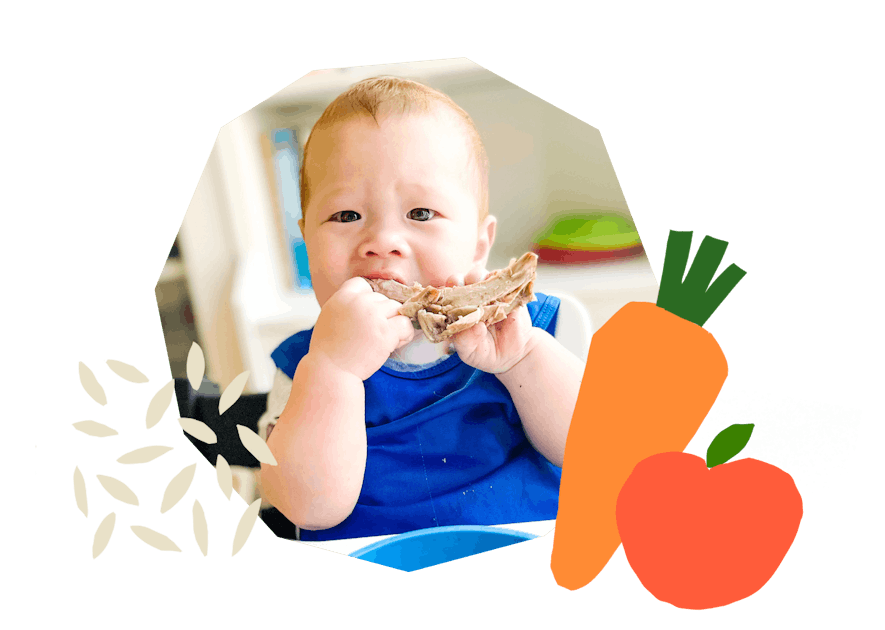
The Program Baby-Led Weaning with Katie Ferraro
A step-by-step digital program for starting solid foods safely and navigating the original 100 FIRST FOODS™ meal plan with baby-led weaning.
 EXPERT-LED, PROVEN APPROACH TO EATING REAL FOOD
EXPERT-LED, PROVEN APPROACH TO EATING REAL FOOD CONCISE VIDEO TRAININGS TO MASTER BABY-LED WEANING
CONCISE VIDEO TRAININGS TO MASTER BABY-LED WEANING 100 FIRST FOODS DAILY MEAL PLAN WITH FOOD PREP VIDEOS
100 FIRST FOODS DAILY MEAL PLAN WITH FOOD PREP VIDEOS
Baby-Led Weaning for Beginners Free Workshop
Is your baby ready to start solid foods, but you’re not sure where to start? Get ready to give your baby a solid foundation to a lifetime of loving real food…even if you’re feeling overwhelmed or confused about this next stage of infant feeding.
Get baby-led weaning recipes and tips delivered to your email inbox.

